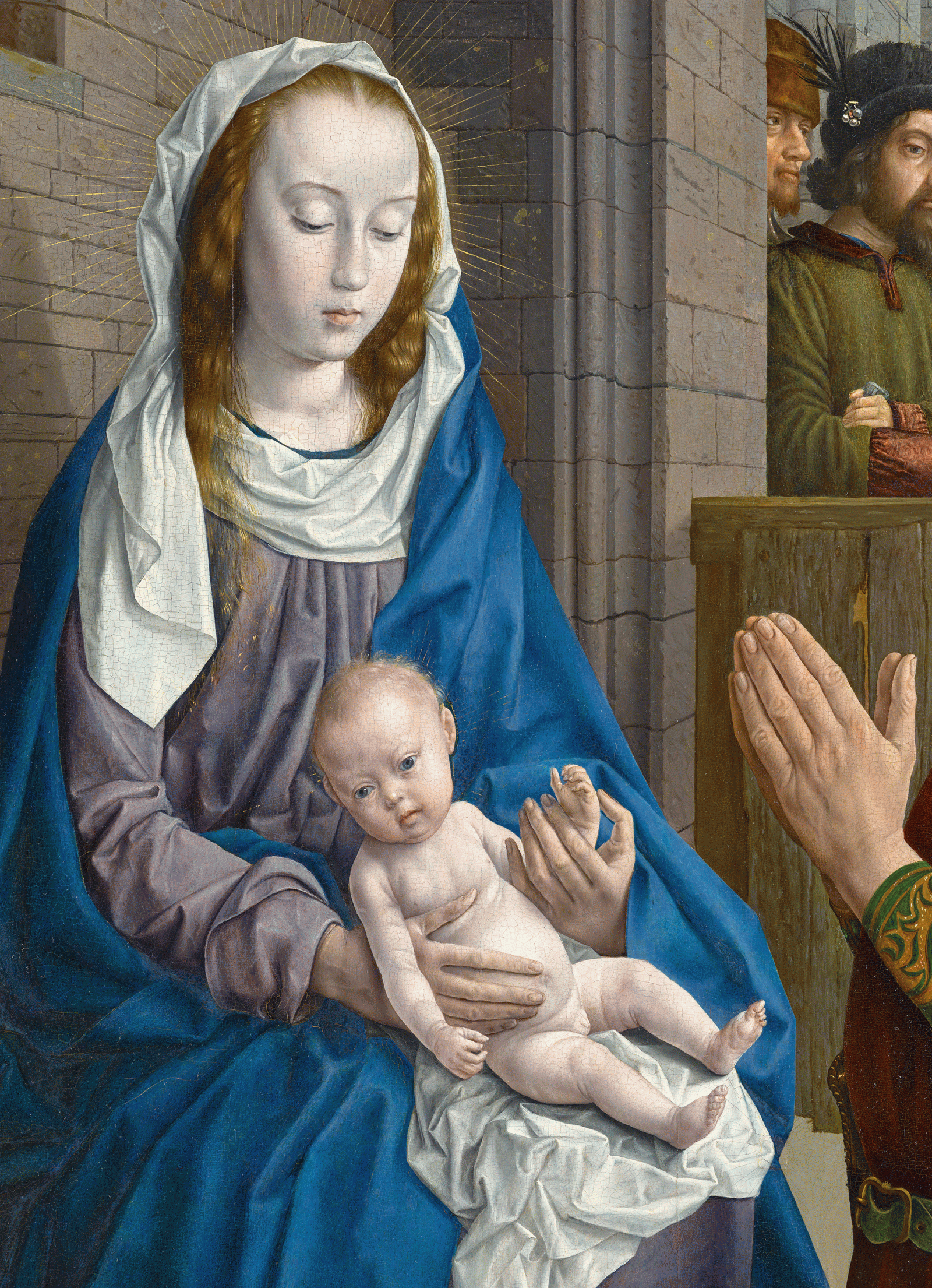Vortrag
Stephan Kemperdick:
Hugo van der Goes and Pictorial Logic

Hugo van der Goes is certainly the most important Netherlandish artist of the second half of the 15th century, whose works were coveted by members of the court as well as by the civic elite, ranging from Archduke Maximilian of Austria to the rich Florentine merchant Tomaso Portinari. His inventions and re-formulations of standard themes of Christian iconography became a source of inspiration for generations of artists. Starting in 1467, Hugo worked as a master painter in Ghent but withdrew around 1476 to a monastery near Brussels to become a lay brother. He continued to work there until he was suddenly seized by a mental disease, and died soon afterwards in about 1482. These circumstances in particular have time and again been seen as a key to the understanding of Hugo’s artistic language.
The preparations for an exhibition on Hugo van der Goes – the first one ever – and of the accompanying comprehensive catalogue have led to a certain reassessment of the artist and his development. The first part of my talk will address this issue and discuss the image of the artist, as it has developed in the literature.
The second part of the lecture will deal with an idiosyncratic, even peculiar aspect of Hugo’s work. He is known for powerful, often monumental figures and subtle use of colour, two aspects that stand out from the preceding Northern painting. Lesser known, however, is that the artist often paid great attention to small, sometimes even inconspicuous details. These are not mere enrichments or decoration, but often follow a highly developed logic otherwise foreign to the art of the day. Sometimes they even offer new sense to a whole composition. A close reading of some works of the artist, especially the Portinari Altarpiece in the Uffizi, will demonstrate this hitherto unnoticed, highly sophisticated aspect of a major painter of the Northern Renaissance.
Stephan Kemperdick is curator of Early Netherlandish and Early German Painting at the Gemäldegalerie, Staatliche Museen zu Berlin (Berlin State Museums). He studied fine arts in Düsseldorf and art history at the Freie Universität Berlin (FU Berlin). Before his appointment at the Berlin State Museums, he served as assistant curator at the Städel Museum Frankfurt (1999–2002) and the Gemäldegalerie in Berlin (2003–2004), and as Curator of Old Master Paintings at the Kunstmuseum Basel (2005–2007). His publications include monographs and catalogues of early German and Netherlandish painting. He has curated and co-curated several exhibitions, including "The Early Portrait," Basel 2006; "Hans Holbein the Younger," Basel 2006; "The Master of Flémalle and Rogier van der Weyden," Frankfurt/ Berlin 2008/09; "The Road to Van Eyck," Rotterdam 2012/13; "The History of the Ghent Altarpiece," Berlin 2014; and "Holbein in Berlin," Berlin 2016.
01. Dezember 2022, 15:00 Uhr
This event will take place in a hybrid format.
Venue
Palazzo Grifoni Budini Gattai
Via dei Servi 51
50122 Firenze, Italia
To participate in person please email KHI-Presse@khi.fi.it to reserve a seat.
To participate online please register in advance via Zoom:
https://zoom.us/meeting/register/tJwkdumuqDIrGNEvWo6lESMeRKjrMIsL7xLv
After registering, you will receive a confirmation email containing information about joining the meeting.
Hinweis
Diese Veranstaltung wird durch Fotografien und/oder Videoaufnahmen dokumentiert. Falls es nicht Ihre Zustimmung findet, dass das Kunsthistorische Institut in Florenz Aufnahmen, auf denen Sie erkennbar abgebildet sein könnten, für die Veranstaltungsdokumentation und Öffentlichkeitsarbeit (z.B. Social Media) verwendet, bitten wir um eine entsprechende Rückmeldung.


